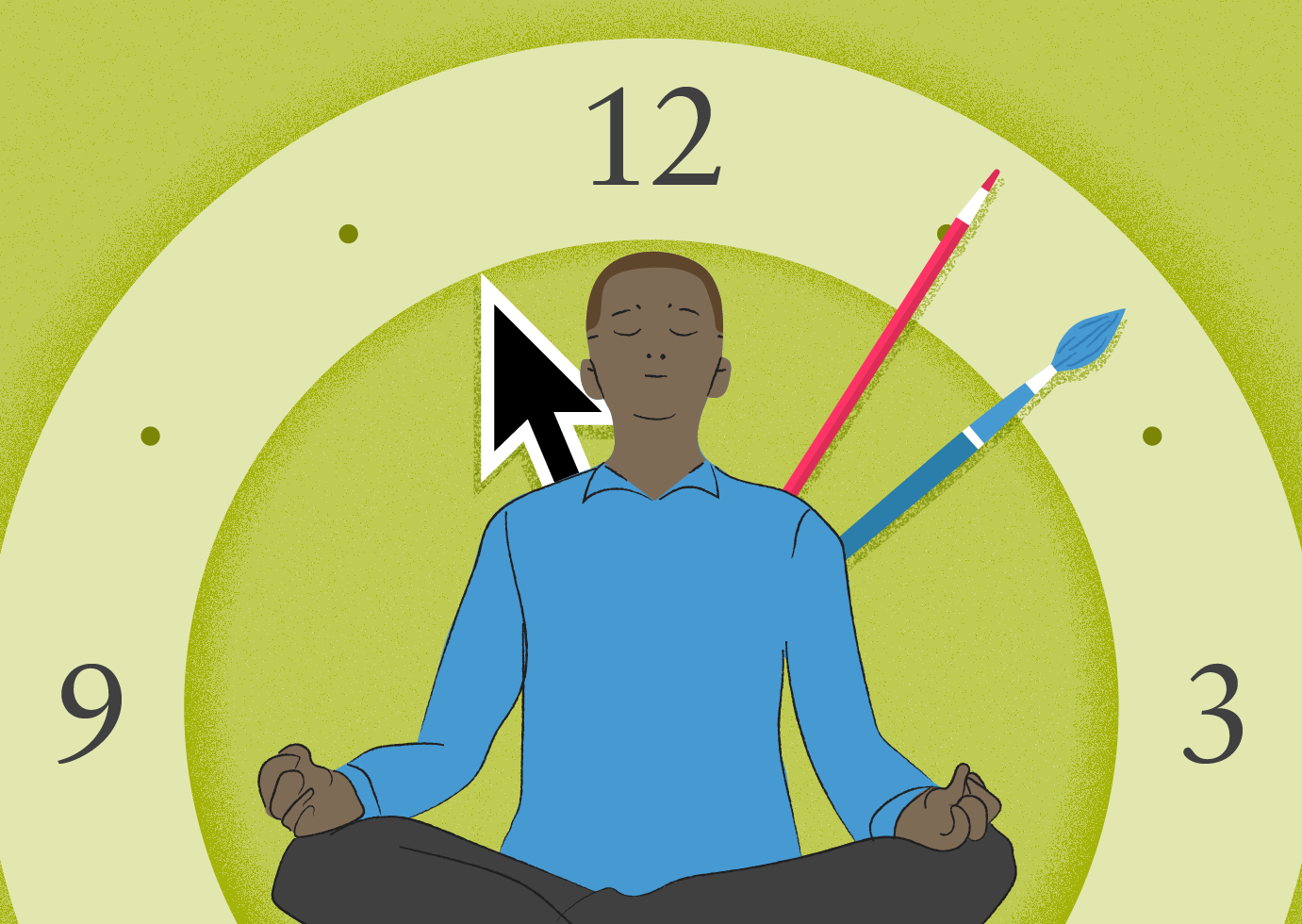Being creative on the clock

3-2-1… create! In the agency and business marketing world, we creatives have all been there. You need a strategy, an idea, a design — that just right turn of phrase or gesture on the page — and you need it now. Being creative is what we do, and most often, we have to do it on a strict schedule.
The romanticized idea that true creativity is mysterious is hardwired into our culture — that when you try to systemize it, things come out…well, systematic (and uninspired). But as working strategists, writers, and designers, we need to be practical about it — to be creative consistently and efficiently. Those are two words we don’t normally associate with free-flowing creativity.
Less process, more mindset
Through education and experience, we’ve all learned techniques to demystify creativity, and each of us have our tricks and frameworks to break things down, grease the wheels, and get things rolling. But there is a more fundamental aspect to creativity — one that defies technique and training.
If we want to free up our creativity and find that spark when we really need it, we need to step back from our process and into our mindset. Because while being creative on demand can be really hard, we need to do something that’s even harder for most of us: relax.
The elusive three Rs
Ok, here we are. The brief is on the screen, the schedule is set, and the open, blank file is staring back at us. We feel the adrenaline and the pressure, and we’re starting to get fired up.
But to get the juices flowing, we really need to go in the other direction, towards calm. Deadlines and the pressure to meet expectations often lead to anxiety, and the anxious mind is not primed for creativity. We need to be rested, relaxed, and receptive for our creative minds to make those critical connections that we call inspiration (a concept that’s supported by brain science).
What to do when you just can’t wait for inspiration to strike
How do you achieve “rested, relaxed, and receptive” on a regular basis? When quiet time away, that perfect vacation, or a silent retreat isn’t in the cards, here are some strategies and tactics to achieve the three Rs inside your workday.
- Take a petite retreat.
When you can’t get your whole body out of the rush, you can get your head out of it. You can call it meditation or not, but turning off the noise and hitting reset even for even a few minutes can cleanse the creative palette for new inspirational flavors.
Try this simple four-step exercise with the creative media of your choice at hand. For a deeper dive into mindfulness and design, see this AIGA article.
- Plan for failure.
Client and colleague expectations are always high, so crank back your own and give yourself a break. Know that your good to bad idea ratio will be weighted toward bad. Get the oddballs and duds out quickly — and out of the way.
This is especially true for brainstorming. Too often we only want to put the good stuff on the white board, but the point is to cover as much ground as possible, fertile or not. You can make some surprising connections when the gates are wide open, and the laughs that come from the out-of-left-field ideas will help douse some of the anxiety and open up your creative pathways.
- Share the pain (and the glory). Anxiety can put you in blinders. I, for one, tend to go down the rabbit hole alone when the pressure is on. When you’re fighting creativite anxiety, airing it out and putting your ego in check with your work group can be invaluable. A group brainstorm/crit can refocus the anxious energy, lighten the mood, create a new flow, and open everyone’s ears and eyes.
- Find the fun in it. From when we’re kids, we’re told that creativity should be fun. And even after we’ve been in the work trenches as creative adults, we hopefully remember the value in that kind of free-spirited, childlike creativity. And it makes sense. Just as when we’re relaxed and rested, having fun fires the body’s feel-good chemical reactions. So think of your creative challenge as a kind of game or puzzle, or even get down on the floor with some stimulating items (cut paper, blocks, etc.) in a virtual creative sandbox.